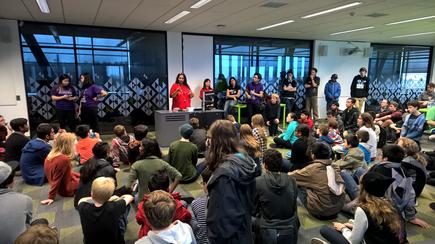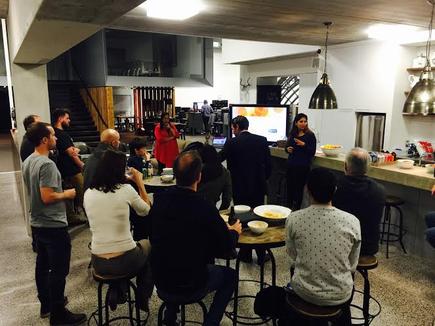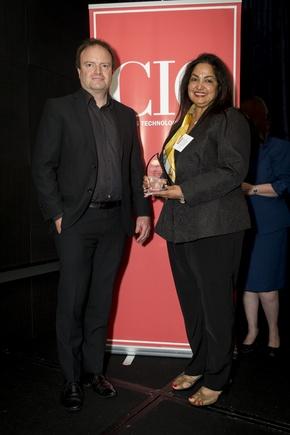
Edwina Mistry
Information technology is the fastest growing industry in New Zealand, but there’s a significant shortfall of school leavers choosing to take up careers in the sector
Edwina Mistry is a constant presence at technology conferences, to secure assistance in her quest to encourage high school students to visualise a career in IT
Mistry is Industry and Community Engagement Manager at Manukau Institute of Technology (MIT). A major component of her job requires her working with businesses that will provide work placements, internships, and projects for students.
As well, her efforts are focused on low decile schools in Auckland, talking to Auckland students and their families on the varied career options available in information technology.
She says if the students’ parents or principal caregivers are not involved in ICT, they direct the children to more traditional careers because of the lack of knowledge of the careers and opportunities in the ICT world.
She calls this the challenge of, “influencing the influencer”.
Thus, one of her projects at MIT is the IndustryConnect event, where students and their parents/caregivers are invited to hear industry leaders and MIT graduates now in the IT workforce talk about their careers.
As well, for the past three years, the Faculty of Business and IT at MIT, of which she is connected, has been organising programmes called ‘Experience IT in the Real World’ and ‘Shadow IT’ that also address this issue.
The two programmes have noted how school students have a limited perception of the choices, challenges and rewards of IT careers.
Coupled with this is the current shortage of skilled people to fill jobs in IT.
For ‘Experience IT in the Real World’, she brings students in Year 10 and 11, who are mainly Maori and Pacifica, to talk to ICT professionals, at their workplace.
The students meet members of the IT department, ranging from help desk teams, project managers, to CIOs.
Three years ago, Mistry organised “Shadow IT”, where female high school students are each assigned an ICT professional to ‘shadow’ for a day and see what a career in IT might look like.
This year, on August 25, industry body NZTech is taking the project, now called “Shadow Tech Day”, to Wellington and Christchurch. More than 300 students are participating at the event.
NZTech chief executive Graeme Muller points out only 23 per cent of the tech sector are females, yet research shows gender balanced tech firms are 40 per cent more profitable. “And for the girls, tech roles are some of the highest paid roles in New Zealand, and the most flexible.”
“It is important for school students, especially girls, to realise that the careers in IT are varied and are not for geeks only,” explains Mistry. “It is important to change the perception of the young students and guide them towards what a good career in IT has to offer.
“Shadow Tech is an excellent way of educating and giving our young girls the opportunity to experience a day in the life of an IT professional."
Information technology is the fastest growing industry in New Zealand, but there’s a significant shortfall of school leavers choosing to take up careers in the sector, she says.
“Women are under-represented in IT and it’s important to showcase the exciting prospects in the industry, while these young women are making their career choices.”

@PeterSellars Edwina and #MIT are doing some great work here. Excited to contribute. Here's that @cio_nz link https://t.co/zrzlych61C
— Reuben Dunn (@DefSol) August 15, 2016
Hacking into an IT career
Another programme Mistry started was the JHack, New Zealand’s first junior hackathon. The competition is open to all levels and skills of students from Year 7 – Year 13, and they work in teams to build their own game.
Students are judged on how unique and creative the game is.
Women are under-represented in IT and it’s important to showcase the exciting prospects in the industry, while these young women are making their career choices.
This year, she says, 150 students from 20-plus schools registered for the competition, which was run by the Microsoft MSA Team.
JHack, was developed to encourage creativity, in a fun stimulating environment, to motivate students to consider a career in IT, she says.
“The objective of JHack was to introduce programming to students in a stimulating format, to show how they could be a part of New Zealand’s digital economic future.”
Students are assigned an industry mentor, who helps them work through a series of programming tutorials.
The event was unique in that industry mentors worked with the teams of students for six weeks before the actual competition. It enabled them to interact with an IT professional and learn in a collaborative work-simulated environment.
The students earned badges as they progressed over the month of June and learnt to programme in a stimulating way, she says.
Some of the students were able to visit their mentor’s workplace and experience what it is like to be involved in IT.
The programmes MIT is promoting show how important it is to make students aware of the careers available in ICT.
“They realise that IT is not all about sitting in rooms, working behind a computer and not talking to anyone. They realise it can be fun, they can be project managers, business analysts,” says Mistry.
A new project her team at MIT is working on is the Young ICT Explorers, the flagship youth innovation programme of SAP.
The programme, started in Queensland in 2010, currently operates in seven states and territories in Australia.
Students from years 3 to 13 are encouraged to develop innovative ICT projects. At the Young ICT Explorers event on October 8 at MIT, students will present their projects to a judging panel of academics, industry partners and ICT professionals.

Stand out in a crowd
The seeds of Mistry’s advocacy work were strewn more than 30 years ago, when she started the Apple division in Bahrain.
She had completed her postgraduate diploma in computer programming, and led a team whose members were mostly male, some of whom were older than her.
''I have had a very fulfilling career,” she says, but at the same time, knew the challenges of being a female in a technical role.
At MIT, she talked to industry executives, asking if they could volunteer as mentor to students, on how they could “stand out in a crowd”.
Today, the “stand out in a crowd” mentoring programme is part of the formal curriculum of the bachelor of applied management, graduate diploma in applied management, bachelor of ICT and graduate Diploma in ICT at MIT.
She would be delighted to see more organisations putting their hands up to participate in programmes encouraging students to visualise a career in IT.
Based on her experience, once a company is involved with the projects, they continue their involvement the following year and identify staff who can mentor the students.
As to the impact of the programmes on the students, at the start of each programme, she runs a survey among the students on whether they were interested in taking up technology or working in IT.
Around 30 to 50 per cent of the students say yes. At the end of each programme, she runs the same survey question and the students who answer yes are 80 per cent or above.
One especially gratifying experience that Mistry recalls, was when she helped one of the business students at MIT apply for an internship.
She drove the student to the meeting, and joined her during the interview with the manager.
“When the latter asked the student, ‘when can you start?’ tears started rolling down her eyes,” says Mistry. “No one has ever done anything like this for me before,” the student said.

Send news tips and comments to divina_paredes@idg.co.nz
Follow Divina Paredes on Twitter: @divinap
Follow CIO New Zealand on Twitter:@cio_nz
Sign up for CIO newsletters for regular updates on CIO news, views and events.
Join the CIO New Zealand group on LinkedIn. The group is open to CIOs, IT Directors, COOs, CTOs and senior IT managers.
